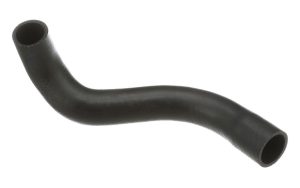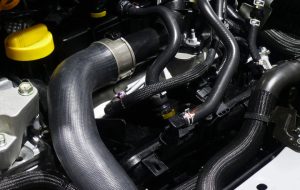A car’s cooling system depends heavily on radiator hoses — often overlooked, but vital. These flexible tubes connect the engine, radiator, heater core, and more, circulating coolant to prevent overheating. Understanding the various hose types, recognizing early signs of failure, and knowing how to replace them properly can save you from costly engine damage.
Types of Radiator Hoses

Radiator hoses come in several designs and materials, each suited to specific functions and vehicles:
| Hose Type | Material | Typical Location / Use | Pros / Cons |
|---|---|---|---|
| Upper & Lower Hoses | EPDM rubber | Connect engine to top/bottom of radiator | Durable, heat-resistant; may swell or crack over time |
| Heater Hoses | EPDM or silicone | Carry coolant to heater core | Softer at low temp; silicone options cost more |
| Bypass or Return Lines | Reinforced EPDM | Redirect coolant in closed-loop systems | Small leaks tricky to locate |
| Silicone Performance Hoses | Silicone with fiber reinforcement | Upgraded systems, high-heat conditions | Max durability; more expensive |
Key material notes:
-
EPDM rubber is affordable and resistant to heat & chemicals, but ages under UV and ozone.
-
Silicone hoses boast superior longevity and temperature tolerance, ideal for modified or older vehicles.
-
Reinforcements such as spiral or fabric layers help hoses resist collapse under vacuum.
Common Causes of Hose Failure
Radiator hoses degrade over time from:
-
Age and heat — rubber hardens and cracks after ~5–7 years.
-
Coolant contamination — acidity or debris deteriorates the hose interior.
-
Incorrect installation — too tight clamps cut edges; twisting kinked hoses.
-
Physical damage — chafing, heat from nearby components, or road debris.
-
Pressure spikes — malfunctioning caps or water pumps can overpressure hoses.
Signs Your Hoses Need Replacement
Early detection avoids breakdowns.
Visual & Physical Clues
-
Soft/Spongy Areas: Squeeze along the hose — sponginess indicates internal breakdown.
-
Cracking or Blistering: Common at bends or clamp zones.
-
Oily Slicks or Coolant Leaks: Could mean micro-cracks or loose clamp.
-
Bulging or Swelling: A hose losing rigidity needs immediate replacement.
-
Loose Hose Ends: Hose slipping off under pressure signals clamp or hose failure.
Dashboard & Engine Symptoms
-
Overheating or Coolant Loss
-
Steam or Puddles Under Vehicle
-
Temperature Gauge Fluctuations During Idle or Stop-and-Go
Replacement Tips & Best Practices
Proper replacement protects engine and cooling efficiency.
Choose the Right Replacement
-
OEM-style hose: Flexible EPDM molded to fit perfectly.
-
Upgrade kits: Silicone hoses for high-temp/pressure systems.
-
Reinforced hoses for turbocharged or heavy-duty applications.
Careful Removal
-
Let engine cool fully.
-
Drain coolant into a container.
-
Loosen clamps and twist hose gently — avoid cuts.
-
Clean the mating surfaces on radiator and engine ports.
Installation
-
Use new hose clamps — avoid reusing old ones.
-
Position hoses without sharp bends or tension.
-
Tighten clamps to manufacturer torque specs.
Refill & Test
-
Refill coolant, bleed air according to vehicle specs.
-
Run engine to operating temps, monitor for leaks.
-
Re-check clamp tightness and top off coolant.
Quick Checklist:
-
Don’t overtighten clamps — hose edges don’t retract.
-
Avoid anti-seize or lubricants on hose surfaces — they might loosen fit.
-
Inspect hoses every service interval (~20,000 km or annually).
When to Upgrade vs. Replace

Consider upgrading when:
-
High-performance or towing use — silicone hoses resist higher pressure and temps.
-
Visible dry-rotting or hose > 5 yrs old — even if unbroken, replacement prevents future problems.
-
Cosmetic appeal — brightly colored silicone hoses add visual flair under the hood.
DIY Checklist Before You Start
-
Engine fully cooled, ignition off.
-
Drain coolant into a sealable container for reuse or disposal.
-
Remove clamps and hoses carefully.
-
Match new hose shape and length.
-
Install with proper clamps and no twisting.
-
Refill coolant, bleed system, inspect for leaks.
Where to Buy Quality Radiator Hoses and Clamps
You can find a broad selection — from OEM replacements to performance-grade hoses — tailored to your vehicle’s specifications at:
This store offers OEM-style and silicone hoses, reinforced options, clamps, and coolant products. Easily filter by model and purpose to find the ideal fit and durability.
Final Thoughts
Radiator hoses may seem secondary compared to radiators or water pumps — but neglecting them invites overheating, leaks, and engine harm. Observe their condition regularly, detect early signs, and replace with the right components at the right time. Your engine depends on the silent work of these flexible lines.
A full cooling-system check — hoses, coolant, clamps — keeps you confidently on the road, season after season.